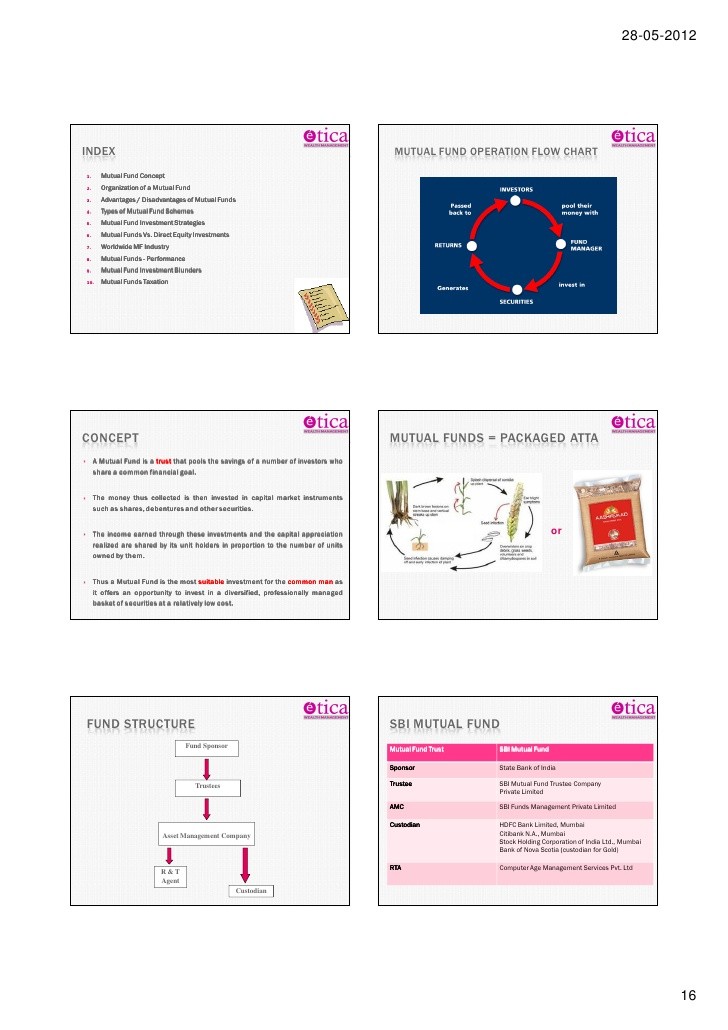The Fund Investor s Schoolhouse Mutual Fund Investing Tips
Post on: 20 Июль, 2015 No Comment

Articles
Over the past twenty years, Richard Loth has written numerous articles for community newspapers, newsletters, and financial websites that cover a wide variety of investment topics. Most of these writings have focused on mutual fund investing and are available to Schoolhouse students when they pertain to the subject matter they are pursuing.
The ABCs of Mutual Fund Investing
The public’s acceptance of the mutual fund as an investment vehicle is well established. As of year-end 2011, investment companies in the U.S. managed approximately $13 trillion in assets in over 8,000 funds. In the U.S. nearly half of all households and more than 90 million individuals are fund investors. It is an accepted fact that, with few exceptions, investing for most non-professional investors means investing in mutual funds. Whether you are a do-it-yourselfer, a client of an investment professional, or a participant in a self-directed, employer-sponsored retirement plan, the lessons contained herein will help you understand the fund investing process. This tutorial is a practical guide for the novice fund investor.
This publication is a comprehensive, plain-English guide to understanding fund-speak. It is intended to help fund investors fathom the jargon used in mutual fund literature, research reports, and the financial press. The in-depth entries in this comprehensive dictionary-like presentation are extensively cross-referenced and explained in non-technical, i.e. plain-English, terminology. Readers are strongly encouraged to refer to the cross-referenced entries in order to obtain a comprehensive understanding of the terminology being researched.
Mutual fund literature is filled with dozens of suggestions for tools that investors can use to select and manage their fund investing endeavors. The Schoolhouse has tried out most of them and has narrowed the field down from several dozen to just eight. All of these fund investing tools are relatively easy to understand and use. They are readily accessible, low-cost, and in some cases free. This educational booklet shows fund investors how to put these tools to work to make selecting funds and managing a fund portfolio as hassle free as possible.
When it comes to selecting and monitoring mutual fund investments, a Morningstar fund report is an indispensable evaluative research tool for fund investors. To say that a Morningstar fund report tells fund investors virtually everything they need to know about a mutual fund in a one-page presentation is not an exaggeration. Morningstar deserves all the credit for this accomplishment. To keep things really simple, this educational booklet discusses the use of just six key analytical evaluative fund report data points and explains their importance in plain-English. By combining relevant information and know-how, fund investors will discover how to replace guesswork with informed decision making.
This educational booklet explains the what, why, where and how of foreign mutual fund investments. Investors “going global” has been a fashionable, hot topic in recent years. While some investment in foreign securities makes sense, for most investors, this strategy has been oversold. The relatively short track record of many international funds suggests that it’s a bit premature to seat foreign funds at the same table with domestic funds in terms of risk and reward. Fund investors should not mistake the hype and advertising surrounding international investing as unbiased advice. Often times the disparities of the returns in foreign and domestic markets make “going international” look very enticing. This booklet takes a hard look at the realities of the opportunities being touted in foreign funds.
An investor begins the portfolio building process by first determining his/her asset-allocation by making a broad apportionment of risk and return using three asset classes – stocks, bonds and cash-equivalents. The investor then chooses from a wide variety of investments with particular investing styles to diversify his/her investment risk and return within these classifications. This tutorial shows fund investors how to use style boxes to accomplish these tasks.
The various labels used to describe index mutual fund investing include such terms as “being on autopilot,” a “couch potato,” a “no-brainer,” and, simply, as “indexing.” Contrary to what may be perceived to be pejorative terminology, these descriptions of index fund investing are viewed by most investment professionals as a highly positive form of fund management, if not better than the managed variety. This tutorial is a practical how-to guide to investing in index mutual funds.
Whether the financial markets are up or down, many investors remain skeptical about their financial future. There’s certainly a lot of scary stuff out there these days to make investors nervous. Many financial professionals believe that balanced mutual funds are good “all-weather” investments in any kind of market environment. They are particularly appropriate for retirement portfolios of non-professional investors; they are relatively easy to understand and have been reliable performers over extended periods of time.














